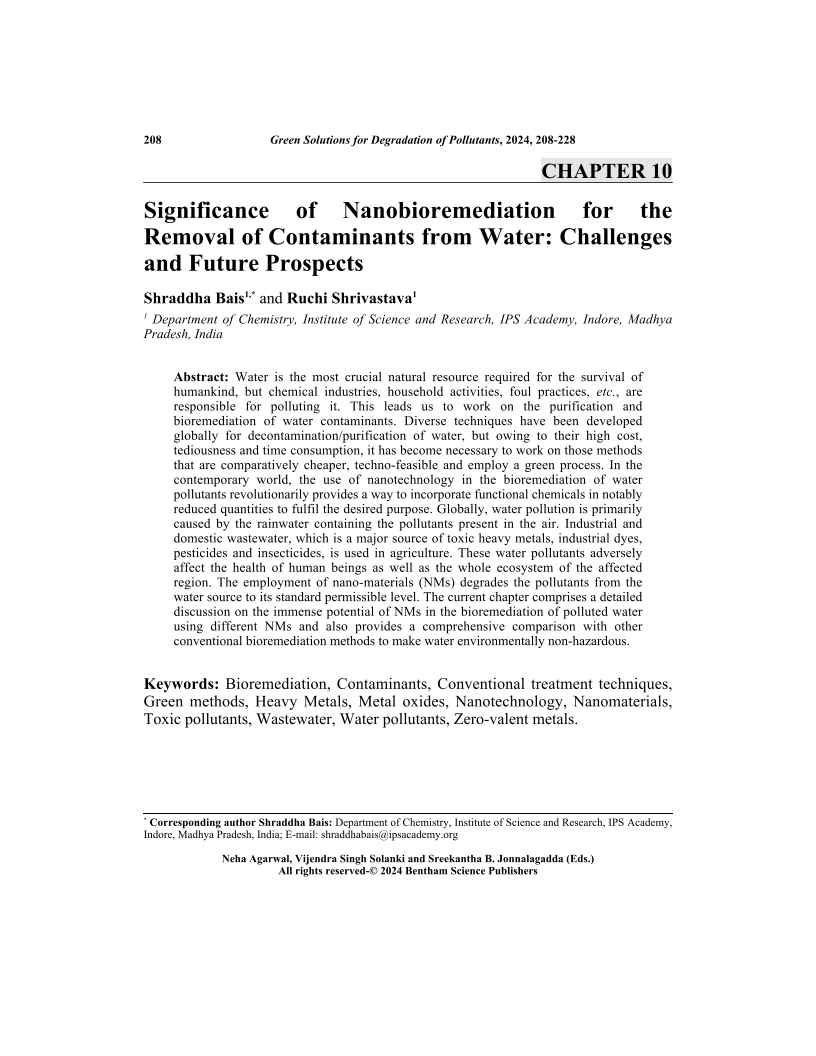Significance of Nanobioremediation for the Removal of Contaminants from Water: Challenges and Future Prospects

- Authors: Shraddha Bais1, Ruchi Shrivastava2
-
View Affiliations Hide AffiliationsAffiliations: 1 Department of Chemistry, Institute of Science and Research, IPS Academy, Indore, Madhya Pradesh, India 2 Department of Chemistry, Institute of Science and Research, IPS Academy, Indore, Madhya Pradesh, India
- Source: Green Solutions for Degradation of Pollutants , pp 208-228
- Publication Date: August 2024
- Language: English
Significance of Nanobioremediation for the Removal of Contaminants from Water: Challenges and Future Prospects, Page 1 of 1
< Previous page | Next page > /docserver/preview/fulltext/9789815238969/chapter-10-1.gif
Water is the most crucial natural resource required for the survival of humankind, but chemical industries, household activities, foul practices, etc., are responsible for polluting it. This leads us to work on the purification and bioremediation of water contaminants. Diverse techniques have been developed globally for decontamination/purification of water, but owing to their high cost, tediousness and time consumption, it has become necessary to work on those methods that are comparatively cheaper, techno-feasible and employ a green process. In the contemporary world, the use of nanotechnology in the bioremediation of water pollutants revolutionarily provides a way to incorporate functional chemicals in notably reduced quantities to fulfil the desired purpose. Globally, water pollution is primarily caused by the rainwater containing the pollutants present in the air. Industrial and domestic wastewater, which is a major source of toxic heavy metals, industrial dyes, pesticides and insecticides, is used in agriculture. These water pollutants adversely affect the health of human beings as well as the whole ecosystem of the affected region. The employment of nano-materials (NMs) degrades the pollutants from the water source to its standard permissible level. The current chapter comprises a detailed discussion on the immense potential of NMs in the bioremediation of polluted water using different NMs and also provides a comprehensive comparison with other conventional bioremediation methods to make water environmentally non-hazardous.
-
From This Site
/content/books/9789815238969.chapter-10dcterms_subject,pub_keyword-contentType:Journal105

